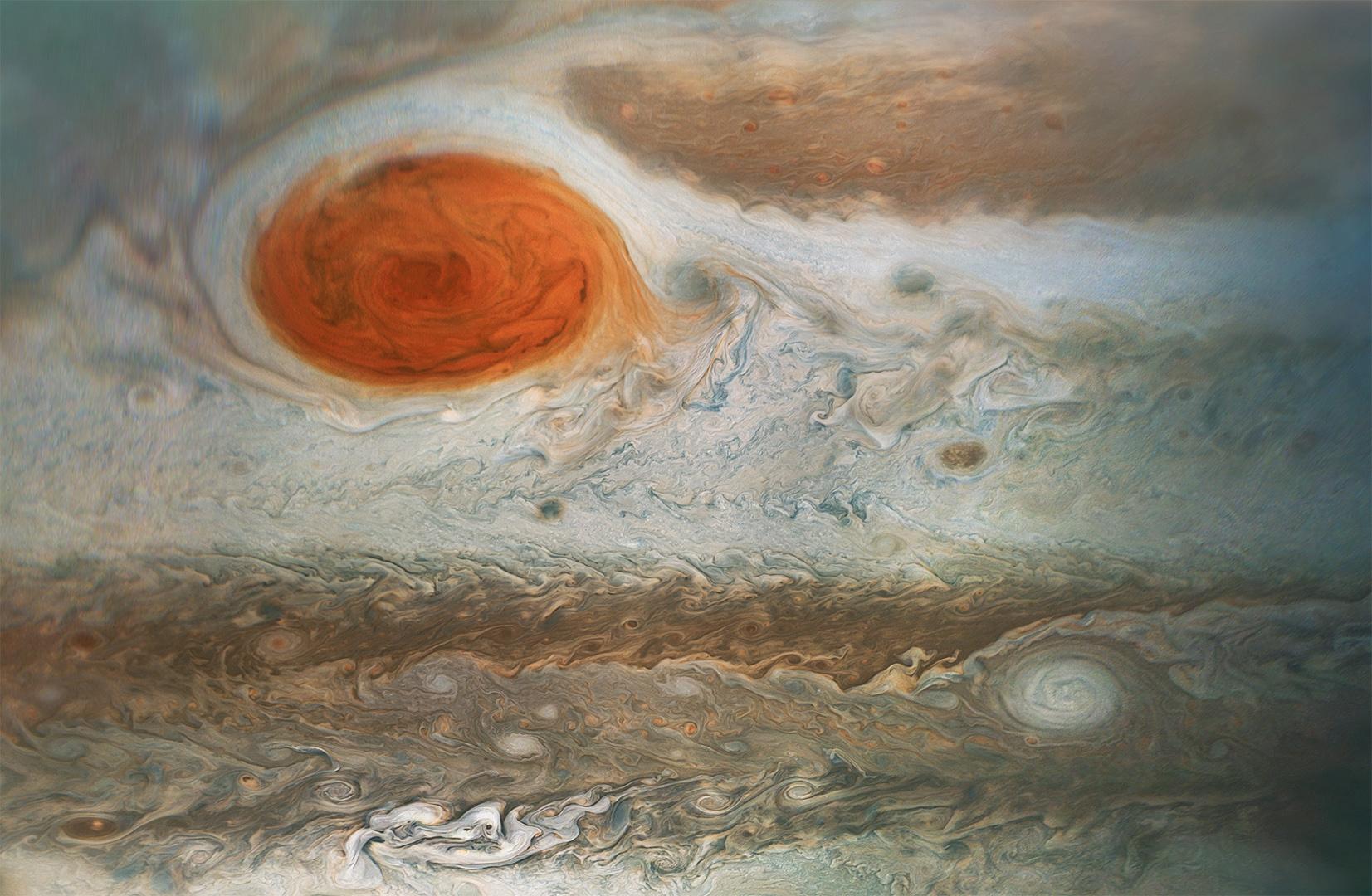Exploring the Solar System’s beauty spots

Our Solar System’s gas giants – Jupiter, Saturn, Uranus and Neptune – all have spots in their atmospheres from time to time. Probably the best known (and most aptly named) is the Great Red Spot on Jupiter, which lies in one of the planet’s prominent cloud belts. This long-lived and well-studied feature is the largest storm in the Solar System, big enough to completely engulf our own planet. The cause of its reddish colouring remains a mystery.
Likewise, Saturn has a spotty atmosphere, which has become the expert province of a Broken Hill amateur astronomer named Trevor Barry – an old friend and recently the recipient of two major Australian and international awards for his work. Trevor’s telescopic scouting for storms in Saturn’s atmosphere took him into the stratospheric world of NASA planetary scientists, with whom he collaborated most successfully when the Cassini spacecraft orbited the planet between 2004 and 2017.

Of the two ice giants (so-called because of the presence of water, ammonia and methane ices in their atmospheres), Neptune is decidedly spottier than Uranus. Lying almost six times further from the Sun than Jupiter, it has been visited only once by spacecraft; that was back in 1989, when NASA’s Voyager 2 flew by to complete its grand tour of the giant planets before heading off into interstellar space.
Images returned from Voyager 2 showed a large dark area in the planet’s southern hemisphere, which was not surprisingly dubbed the Great Dark Spot. Subsequent observations by the Hubble Space Telescope showed that this and other dark spots are temporary features in Neptune’s atmosphere. They have remained shrouded in mystery, but now pioneering observations from the ground have provided new insights.
Working with the European Southern Observatory’s Very Large Telescope in Chile, an international team of astronomers has observed a Neptune dark spot and used spectro-scopic equipment to probe the feature’s depth and chemical composition. Rather than being a hole in the planet’s cloud layer, the darkening seems to be caused by the mixing of ice and haze particulates in a lower layer. Unexpectedly, it is accompanied by something quite new to science – not another dark spot, but a ‘deep bright cloud’, the origin of which remains unclear.
Watch this, er…spot.




